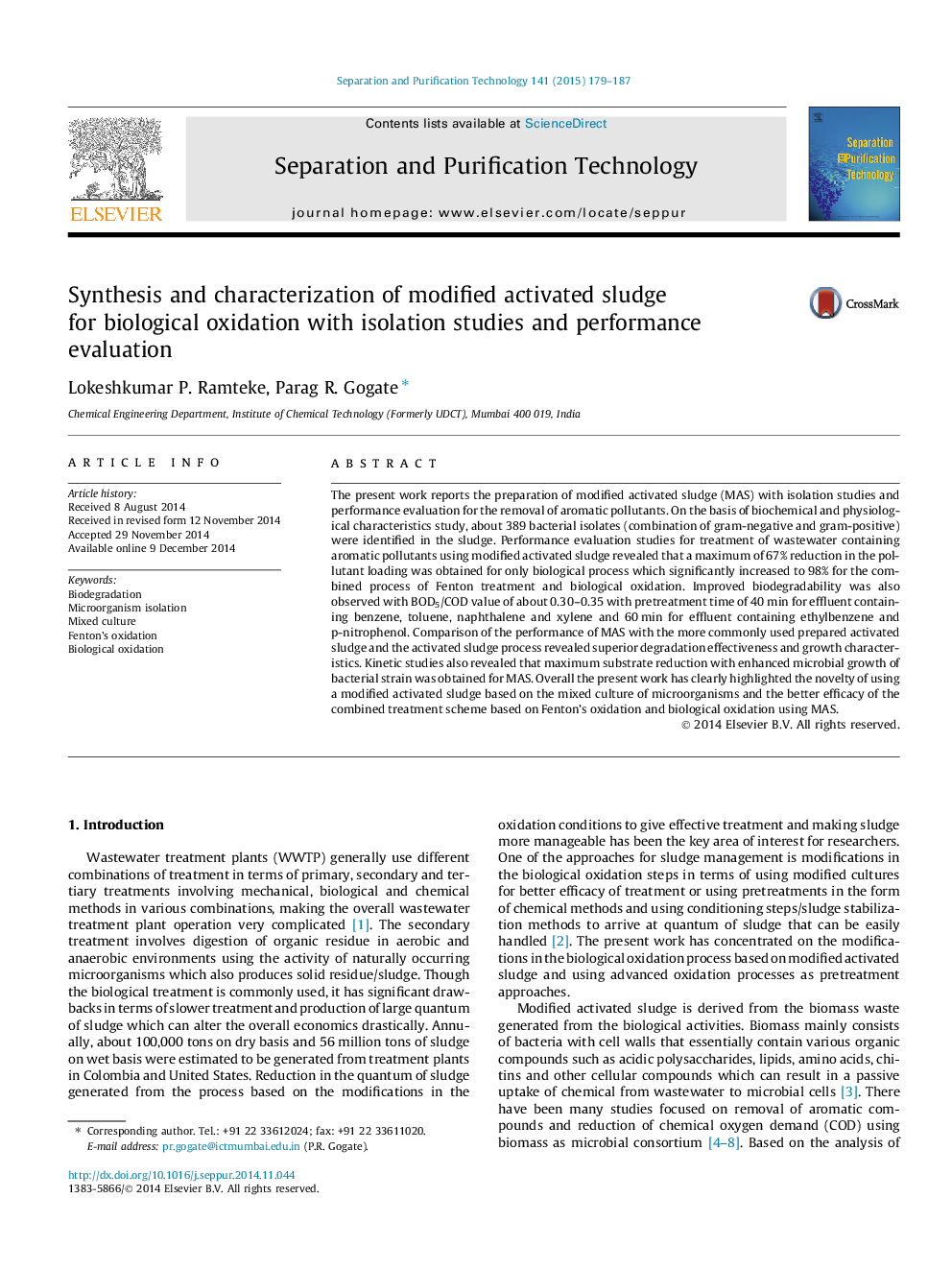| Article ID | Journal | Published Year | Pages | File Type |
|---|---|---|---|---|
| 640670 | Separation and Purification Technology | 2015 | 9 Pages |
•Combined treatment using advanced oxidation process and aerobic oxidation.•Isolation of microorganisms in the modified activated sludge.•Mixed sludge is better than the pure activated sludge based on single species.•Pretreatment in terms of Fenton oxidation leads to beneficial results.•Detailed kinetic analysis has been presented.
The present work reports the preparation of modified activated sludge (MAS) with isolation studies and performance evaluation for the removal of aromatic pollutants. On the basis of biochemical and physiological characteristics study, about 389 bacterial isolates (combination of gram-negative and gram-positive) were identified in the sludge. Performance evaluation studies for treatment of wastewater containing aromatic pollutants using modified activated sludge revealed that a maximum of 67% reduction in the pollutant loading was obtained for only biological process which significantly increased to 98% for the combined process of Fenton treatment and biological oxidation. Improved biodegradability was also observed with BOD5/COD value of about 0.30–0.35 with pretreatment time of 40 min for effluent containing benzene, toluene, naphthalene and xylene and 60 min for effluent containing ethylbenzene and p-nitrophenol. Comparison of the performance of MAS with the more commonly used prepared activated sludge and the activated sludge process revealed superior degradation effectiveness and growth characteristics. Kinetic studies also revealed that maximum substrate reduction with enhanced microbial growth of bacterial strain was obtained for MAS. Overall the present work has clearly highlighted the novelty of using a modified activated sludge based on the mixed culture of microorganisms and the better efficacy of the combined treatment scheme based on Fenton’s oxidation and biological oxidation using MAS.
